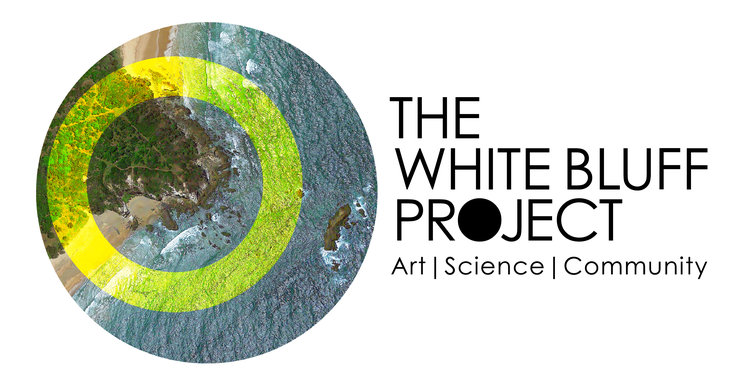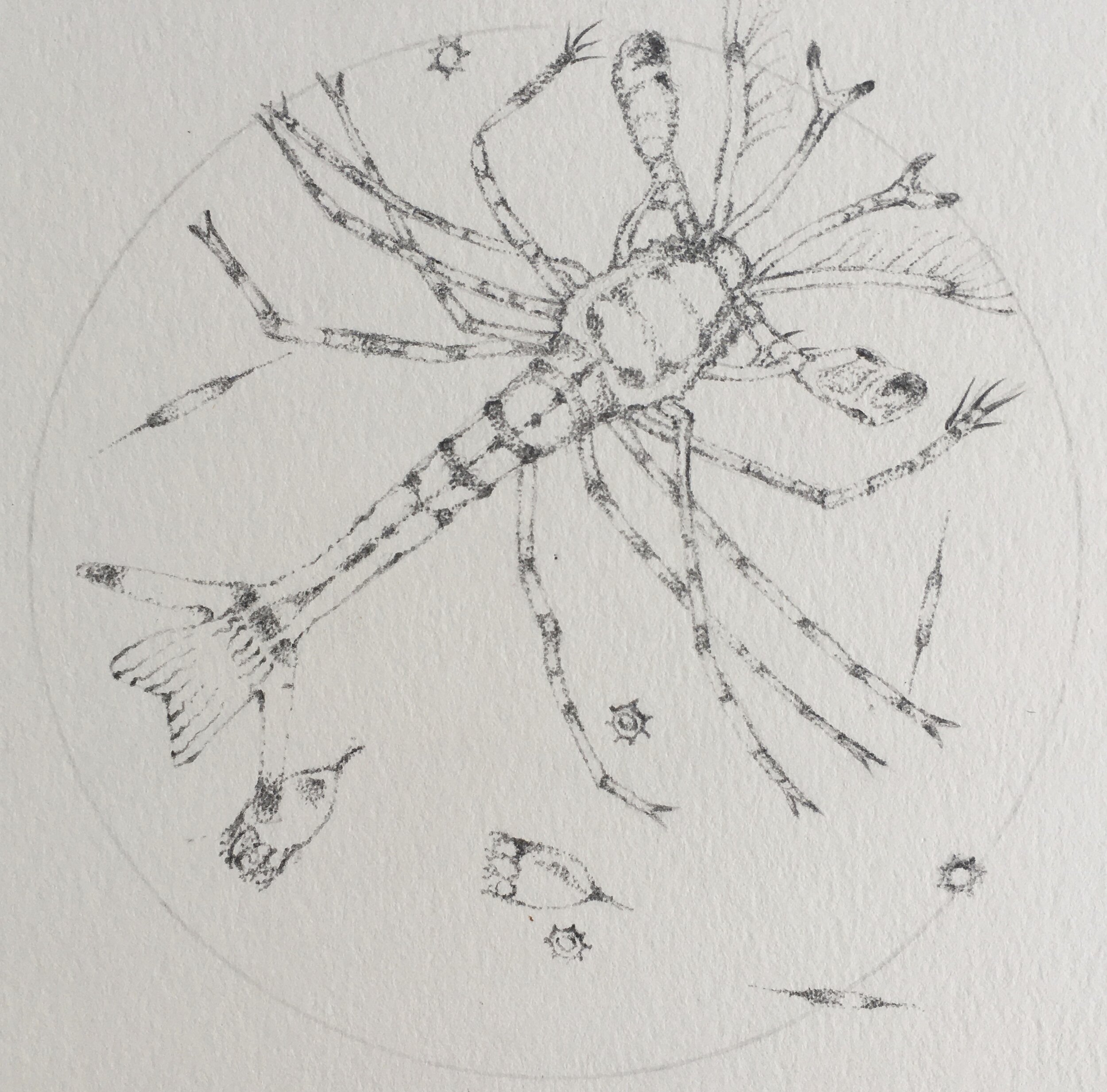Artists and scientists involved in research and fieldwork for The White Bluff Project have stumbled on a rare find in the water off White Bluff.
Marine Biologist, Dr Karina Hall, and artists Jo Elliott and Julie Nash joined forces to study, explore and sample the microscopic life found in the seawater off White Bluff's coastline. The group made two excursions to collect seawater samples with the idea of investigating the microscopic phyto (algae) and zooplankton (animal larvae) that provide the foundation of the marine food chain.
"Our first trip involved all three of us armed with buckets and funnels sampling the seawater from the rockpools at Sawtell Headland," explains Marine Biologist Dr Karina Hall.
"And the second trip I completed on my own because of Covid restrictions. On that trip I took samples from the rockpools at White Bluff having obtained permission from the marine parks manager."
Artist Jo Elliott describes how they collected a combination of seawater and surface scum as they were all interested in what critters may reside in both.
"We used funnels and buckets to collect a large quantity of seawater which we carried back to our cars in large plastic tubs to be analysed at the Marine Science Centre. When we arrived at the Marine Science Centre we filtered some of the water with plankton sieves, to separate out some of the large debris, then we placed a small quantity of the seawater into Petri dishes then we viewed these under a microscope connected to a digital camera and monitor. This meant we could to take images of the many critters we found." Jo said.
While both Dr Hall, Jo and Julie and were all equally amazed with the variety of fascinating critters they found, little did any of them know just how rare one of their finds would prove to be.
Dr Hall explains: "We found many fascinating critters. The first collecting day was just after a large storm event and the water was covered in froth, which under the microscope was revealed to be many tiny water bubbles. These certainly added an added artistic bonus to the images. We found many common zooplanktons, including copepods, amphipods and other crustacean larvae of various stages.
"We also found some structural phytoplanktons with groovy shapes. But our favourite by far was the discarded exoskeletons (known technically as exuviae) of the rock barnacles. Most people know barnacles from their outer crusty shells that are fixed to rock surfaces. But barnacles are not molluscs, they are crustaceans living inside these houses. They actually have another finer exoskeleton similar to prawns or shrimp, as well as their barnacle house. Like other crustaceans they periodically shed this exoskeleton as they grow.
"Looking at our samples we were amazed to see an extremely long attachment to one of the exuviae so, I consulted an expert planktologist to find out exactly what it was. It turned out to be the covering of the male barnacle's reproductive appendage. Apparently, barnacles have the longest penis relative to body size in the animal kingdom, which they use to pass sperm from the male to a female nearby, while remaining fixed to the rock! According to the planktologist this was quite a rare find and he asked if he could use the image in the next edition of his book."
Apart from this unique find, Dr Hall and the two artists were amazed at the wide diversity of creatures they found. For the artists it has been a treasure trove of secret and magical forms that have informed their final artworks for the White Bluff Project exhibition which is due to open on 12 March 2021.
"I'm fascinated with the array of life not observable by the naked eye," said artist Jo Elliott. "It's a whole universe of secret and magical forms. They are beautiful in their own right but they play such important roles in the mechanics of our planet. It's mind-blowing."
Elliott said she has loved discovering the whole agitation and collision and coalescing of life which occurs at this microscopic level.
"It sparks new beginnings. A metamorphosis at a scale we just cannot see. This is what underpins my creative work."
The working title for Elliott's exhibition piece is ‘Combines’.
"It is an exploration of elements, materials and technologies coalescing and colliding together resulting in forms which represent incubation and new beginnings a mirror to what is occurring out there in the melting pot of our coastline."
Dr Hall, who has been integral in this creative process, aiding its exploration and development, said Jo and Julie have been developing some incredible artworks.
"What better way is there to display and introduce these beautiful creatures to a wider audience. There is a diverse assemblage of micro-organisms that are ever present in our marine waters. We cannot see them with the naked eye, it just looks like water, but when we go swimming in the sea we are actually swimming in a soup of marine food for other larger sea creatures. Many of these micro-organisms are exquisite in their shapes, features and complexity."
Artist Julie Nash has taken these exquisite micro-organisms and turned them into exquisite artworks and she talked of how important the art/science interactions have been in that process.
“The interactions Jo and I have had with Karina have been mind blowing. I am so thankful for her time and knowledge and the way she has shared that with us. Taking us into the field, collecting specimens and then back to her laboratory to study them under a microscope was an amazing experience that has given me a wider understanding of the unseen world of microorganisms
“Since then I have done further research into the world of plankton, discovering facts like Phytoplankton provide 50% of the planets oxygen and Zooplankton like copepods are believed to outnumber insects. Together they form an important part of oceanic food chains but unfortunately are being affected by global warming.
“I have really enjoyed studying and drawing the many species found in our local waters and I hope we can educate more people about these important creatures.”
The White Bluff Project exhibition opens at Coffs Harbour Regional Gallery on 12 March 2021 and continues until 22 May 2021.
You can follow the project on Instagram and Facebook.






























